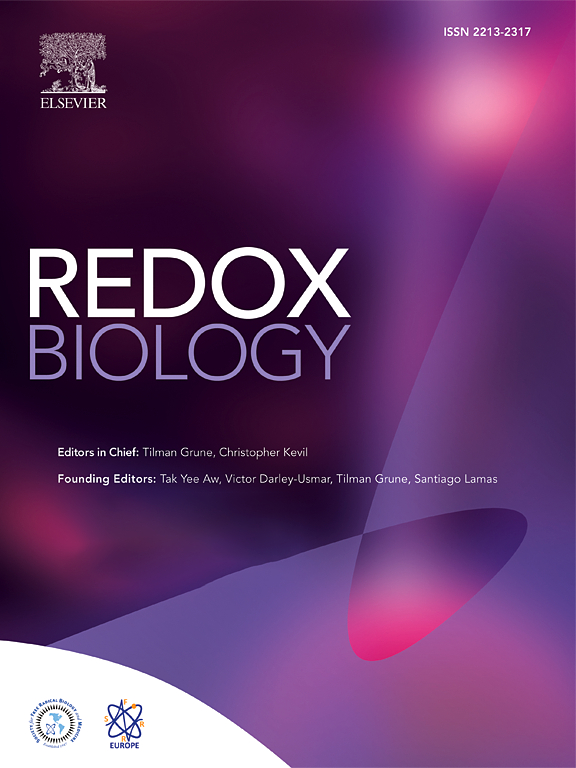Activation of nuclear receptor pregnane-X-receptor protects against abdominal aortic aneurysm by inhibiting oxidative stress.
IF 10.7
1区 生物学
Q1 BIOCHEMISTRY & MOLECULAR BIOLOGY
引用次数: 0
Abstract
Abdominal aortic aneurysm (AAA) is a life-threatening condition, but effective medications to prevent its progression and rupture are currently lacking. The nuclear receptor pregnane-X-receptor (PXR) plays a crucial role in vascular homeostasis. However, the role of PXR in AAA development remains unknown. We first detected the PXR expression in human and murine AAA tissues by RT-qPCR and Western blot. To investigate the potential role of PXR in the development of AAA, we used adeno-associated virus-mediated overexpression of PXR and pharmacological activation of PXR by ginkgolide A (GA) in mouse AAA models induced by both angiotensin II (AngII) and calcium phosphate [Ca3(PO4)2]. The underlying mechanism was further explored using RNA-sequencing and molecular biological analyses. We found a significant decrease in both mRNA and protein levels of PXR in both human and murine aortic smooth muscle cells from AAA tissues, accompanied with phenotypic switching of vascular smooth muscle cell and increased oxidative stress. PXR overexpression in abdominal aortas and GA treatment successfully suppressed AAA formation in both mouse AAA models. RNA-sequencing data revealed that PXR activation inhibited gamma-aminobutyric acid type A receptor subunit alpha3 (GABRA3) expression. Additional mechanistic studies identified that PXR suppressed AAA through mitigating GABRA3-induced reactive oxygen species (ROS) generation and subsequent phosphorylation of c-Jun N-terminal kinase (JNK). Interestingly, p-JNK was found to induce ubiquitin-proteasome degradation of PXR. In summary, our data unveiled, for the first time, the protective role of PXR against AAA pathogenesis by inhibiting oxidative stress. These findings suggested PXR as a promising therapeutic target for AAA.激活核受体pregnane-X-受体可通过抑制氧化应激预防腹主动脉瘤。
腹主动脉瘤(AAA)是一种危及生命的疾病,但目前还缺乏有效的药物来防止其恶化和破裂。核受体pregnane-X-受体(PXR)在血管稳态中起着至关重要的作用。然而,PXR 在 AAA 发生过程中的作用仍然未知。我们首先通过 RT-qPCR 和 Western 印迹检测了 PXR 在人和鼠 AAA 组织中的表达。为了研究 PXR 在 AAA 发生过程中的潜在作用,我们在血管紧张素 II(AngII)和磷酸钙[Ca3(PO4)2]诱导的小鼠 AAA 模型中使用了腺相关病毒介导的 PXR 过表达和银杏内酯 A(GA)对 PXR 的药理激活。我们利用 RNA 序列和分子生物学分析进一步探讨了其潜在机制。我们发现,在来自 AAA 组织的人和鼠主动脉平滑肌细胞中,PXR 的 mRNA 和蛋白水平均明显下降,同时伴随着血管平滑肌细胞的表型转换和氧化应激的增加。在两种小鼠 AAA 模型中,PXR 在腹主动脉中的过表达和 GA 处理都成功地抑制了 AAA 的形成。RNA 序列数据显示,PXR 激活抑制了γ-氨基丁酸 A 型受体亚基 alpha3(GABRA3)的表达。其他机理研究发现,PXR 通过减轻 GABRA3 诱导的活性氧(ROS)生成和随后的 c-Jun N 端激酶(JNK)磷酸化来抑制 AAA。有趣的是,p-JNK 可诱导 PXR 的泛素蛋白酶体降解。总之,我们的数据首次揭示了 PXR 通过抑制氧化应激对 AAA 发病的保护作用。这些发现表明,PXR 是治疗 AAA 的一个很有前景的靶点。
本文章由计算机程序翻译,如有差异,请以英文原文为准。
求助全文
约1分钟内获得全文
求助全文
来源期刊

Redox Biology
BIOCHEMISTRY & MOLECULAR BIOLOGY-
CiteScore
19.90
自引率
3.50%
发文量
318
审稿时长
25 days
期刊介绍:
Redox Biology is the official journal of the Society for Redox Biology and Medicine and the Society for Free Radical Research-Europe. It is also affiliated with the International Society for Free Radical Research (SFRRI). This journal serves as a platform for publishing pioneering research, innovative methods, and comprehensive review articles in the field of redox biology, encompassing both health and disease.
Redox Biology welcomes various forms of contributions, including research articles (short or full communications), methods, mini-reviews, and commentaries. Through its diverse range of published content, Redox Biology aims to foster advancements and insights in the understanding of redox biology and its implications.
 求助内容:
求助内容: 应助结果提醒方式:
应助结果提醒方式:


